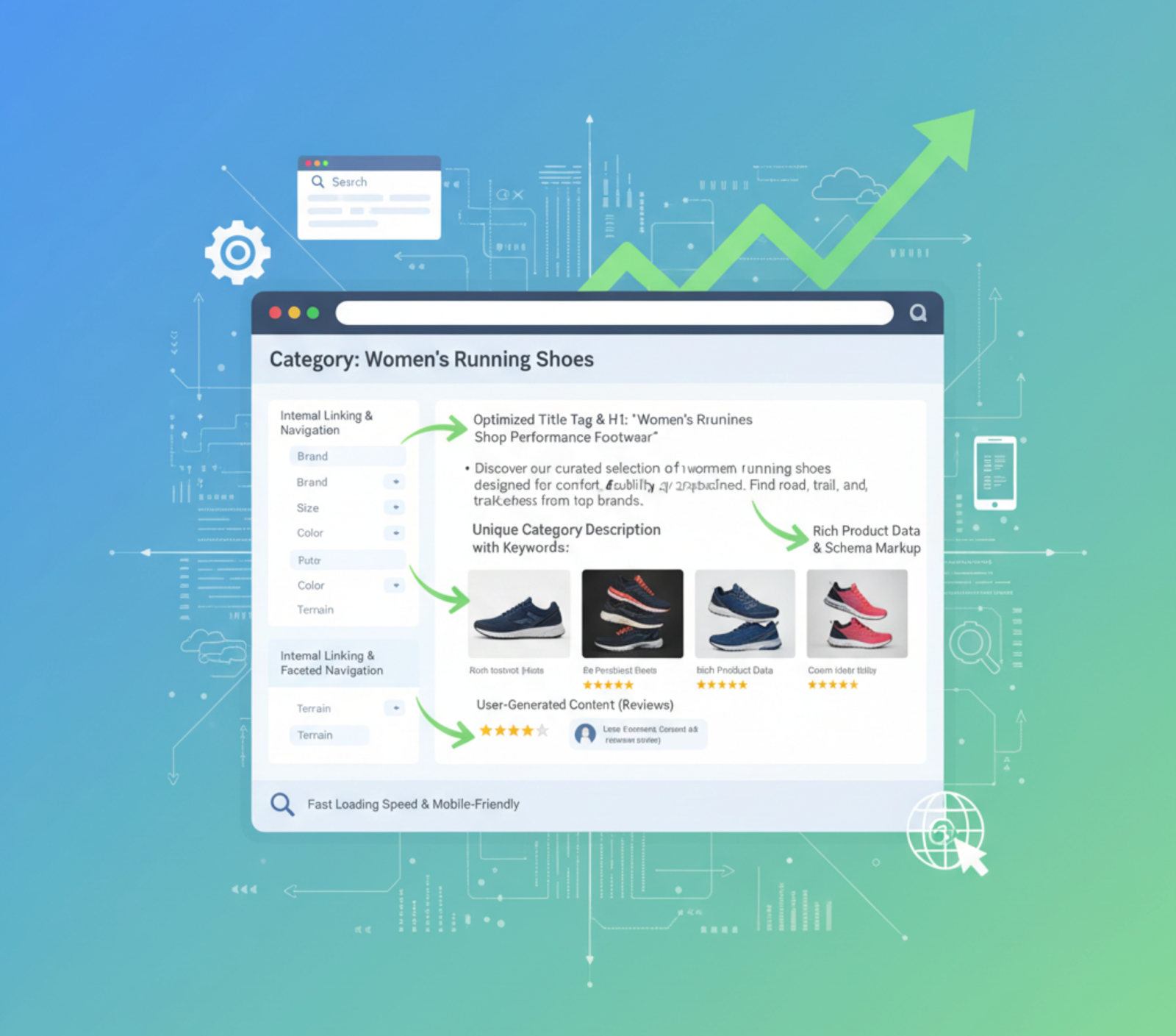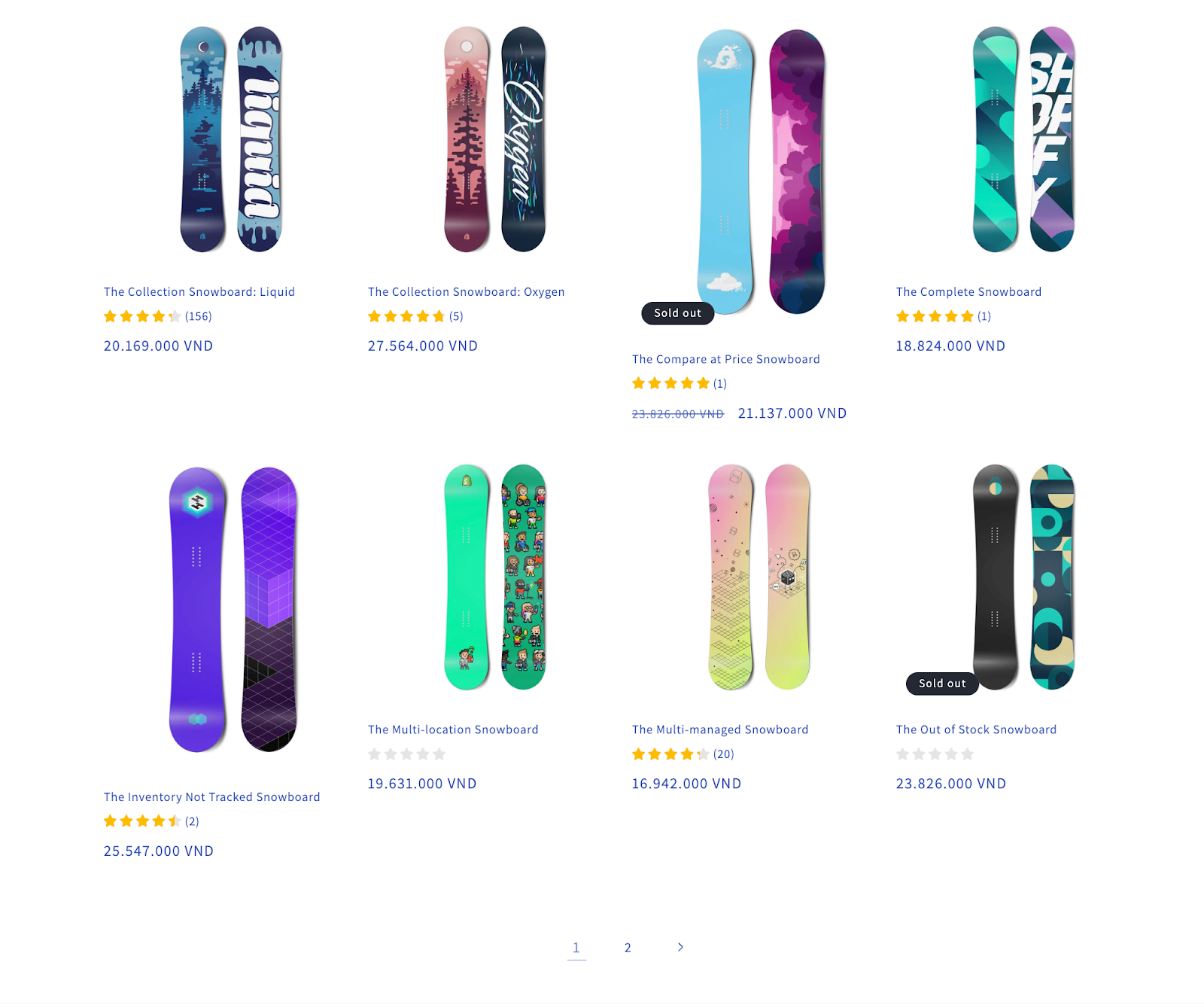
Category pages are the backbone of any eCommerce website. They serve as the bridge between your homepage and individual product pages, helping users browse efficiently while signaling search engines about your site’s structure and relevance. When optimized correctly, category pages can drive a large portion of organic traffic and improve conversions.
Let’s explore key strategies to make your category pages stand out in search results and perform better for users and search engines alike.
Category pages do not mean just organizing products, but they establish your site’s structure, improve crawlability, and provide valuable context to search engines. When well-optimized, they target users who are in the research or consideration stage of the buying journey, helping move them closer to conversion. Moreover, they help distribute page authority across your site and can capture a large range of keyword opportunities.
Why it matters:

Keyword research is the foundation of every effective SEO strategy, and category pages are no exception. You need to identify not only what your audience searches for but also how they phrase their queries when browsing for related items. By understanding their intent, you can optimize your category pages to match user expectations while ensuring that your content aligns with valuable search opportunities.
Tips for keyword research:
Proper keyword targeting sets the foundation for your page title, meta description, and on-page content.
Many eCommerce sites overlook category descriptions, opting to let images do the talking. However, a well-written category description adds both SEO and user value. It introduces the purpose of the category, helps visitors understand what they can expect, and provides search engines with relevant context. While many stores skip this step, adding descriptive text (ideally 150–300 words) can make a huge difference in rankings and engagement.
For example:
“Discover our collection of eco-friendly home decor, designed to bring sustainability and style into your space. From bamboo furniture to organic textiles, each product supports a greener planet without compromising on design.”
Best practices:
This approach helps both SEO and user engagement.

On-page optimization ensures your category pages are fully aligned with how search engines interpret content. Each element, from title tags to image alt text, plays a role in signaling what the page is about. By fine-tuning these components, you can improve visibility, click-through rates, and user experience simultaneously.
On-page SEO checklist:
Optimized metadata increases click-through rates (CTR) while providing essential cues to search engines about your page’s topic.
Internal linking connects your category pages to other relevant pages on your site, guiding both users and search engines through your content ecosystem. It distributes link authority, improves navigation, and helps search engines discover deeper pages that might otherwise remain hidden. A strong internal linking structure can significantly enhance SEO performance and keep users engaged longer.
Effective linking tactics:
A well-structured internal linking system improves crawl efficiency and keeps users exploring your site longer.

The way products are displayed on your category page directly affects both SEO and conversion rates. Search engines rely on structured data and consistent naming to understand your listings, while users depend on visuals and trust signals to make quick decisions. By optimizing product titles, visuals, and snippets, you ensure that your category page appeals to both audiences effectively.
Enhancement tips:
Beside, you can also display ratings and reviews directly under products to build trust and encourage click by using Ryviu. This app can make this simple by syncing product reviews and star ratings from verified buyers. These reviews not only enhance credibility but also contribute to rich snippets, improving your visibility in Google search results.
Speed and mobile performance are critical ranking factors for Google and directly impact user satisfaction. A slow or unresponsive category page can frustrate shoppers, increase bounce rates, and reduce conversions. Ensuring that your category pages load quickly and adapt seamlessly to different screen sizes is vital for both SEO and usability.
Steps to improve performance:
A smoother, faster experience keeps visitors browsing longer, sending positive engagement signals to search engines.

Structured data (schema markup) helps search engines understand your content and display enhanced results such as price, availability, and review ratings. For category pages, this means your listings can show extra details like product ratings, prices, and stock status. Adding structured data also improves click-through rates by making your results more engaging and informative.
Structured data and rich snippets help search engines interpret your page’s content and display it attractively in search results. Recommended markup:
Even with strong SEO, a poorly designed category page can discourage purchases. Your goal is to create a seamless, visually appealing, and easy-to-navigate layout that keeps visitors moving toward conversion. Prioritizing user experience not only boosts engagement metrics but also sends positive signals to search engines.
UX design recommendations:
A great category page not only ranks well but also converts well.
SEO is an ongoing process, and category pages should evolve alongside search trends, user behavior, and product availability. Regularly monitoring your performance helps identify what’s working and what needs improvement. Updating your content also signals freshness to search engines, which can positively influence rankings.
Maintenance checklist:
Optimizing category pages for SEO involves more than adding keywords. It’s about creating a structured, engaging, and user-friendly experience that satisfies both shoppers and search engines. From keyword research and internal linking to UX design and schema markup, every element contributes to higher visibility and better conversions.
When done correctly, your category pages become powerful gateways that attract targeted traffic, improve discoverability, and convert browsing visitors into loyal customers.